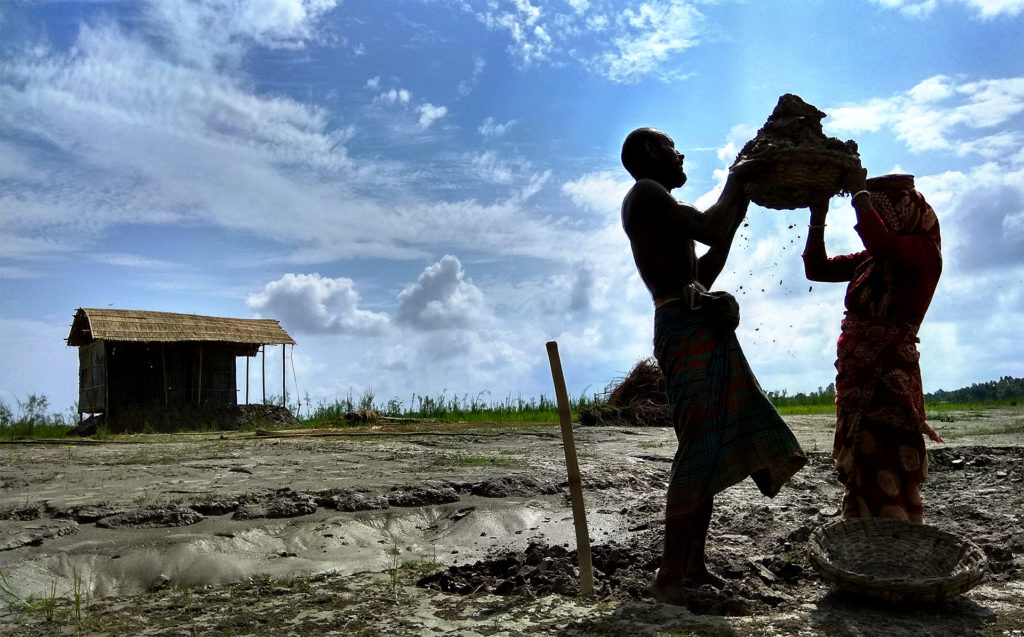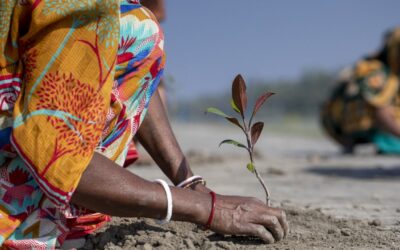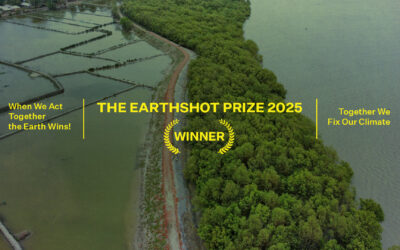Friendship’s climate crisis management programs build resilience by encouraging and spreading locally learned adaptation techniques, but also by introducing knowledge and expertise into communities and organising them to prepare for increasingly unpredictable climate disasters. These are stories from the frontlines of the climate crisis.

Pictures and text by Naushad Ali Husein
December 19, 2019
Eight years ago, Bacchu and Rohima’s land eroded into the river, leaving them squatting by the highway. The land began to resurface last year, and now appears to have gained some permanence; enough in fact, to start building. Five days of hard work under the beating sun and the structure is taking shape. This year the couple and their family might have a home to build their dreams from.

Shiuli Begum’s home was reduced to a clothesline by the flood in July. Everything but the roof was swept away by the river. She’s got a sickly husband and outstanding loan instalments. How to rebuild a home when there are debts to pay off and very little income?

But trapped as she might be by her circumstance, Shiuli doesn’t give up. She does what she can to get by. Skills learned from Friendship are a great help. She’s learnt basic tailoring which she uses to add crucial change to her coffer. She also keeps chickens, which give her alternate sources of food and income.

For years, those villagers that can afford to have been protecting themselves from floods by raising their homes several feet. But they’ve learned that against the current of the river, individual platforms don’t last long. So Muslim e Khatun and her neighbours tried raising a combined platform—a tactic that kept them safe during the devastating 2019 floods when others weren’t so lucky. So they’re extending the platform to include more neighbours, seeing power in numbers. Muslim and her neighbours are using a dredger to suck sand from the bottom of the river onto their land.

Friendship Community Medic-aide Roshna Begum helps conduct mobile satellite clinics, so that people displaced by floods and suffering from flood-related conditions such as water-borne diseases, skin irritation and injuries could access medical care. The mHealth app developed by Friendship enables her to involve doctors in Dhaka to treat patients in her community. It also enables her to maintain medical records for each patient in the village.

Friendship staffer Labibul Islam addresses a Friendship Disaster Management Committee (FDMC) in char Holokhana in Chilmari.
Friendship has struck FDMCs in some 40 communities, composed of volunteers with diverse socioeconomic backgrounds, most of whom are women.
Before disaster strikes, the committee maps the most vulnerable households, including low-lying ones, and those with elderly, sick or disabled residents. The committee also identifies shelters or safe places where these communities can move during a disaster.

Tailor Papu was out of supplies during the floods, and didn’t have any income since his home was entirely flooded. The FDMC was able to lend him BDT 5,000 from its emergency fund maintained by its members. Papu has returned the money since and is back in business.

Moklesur Rahman picked the wrong year to invest BDT 4,50,000 in a banana plantation in Sardarpara, Kurigram. With a 100 per cent margin, he estimated it would be relatively risk free, as banana trees can tolerate some flooding. But this year’s floods were the worst he’s ever seen. After two weeks in waist-deep water, all his trees were destroyed. However, instead of mourning his losses, Mokles, a Friendship Disaster Volunteer, fought to save the lives and possessions of his neighbours.



